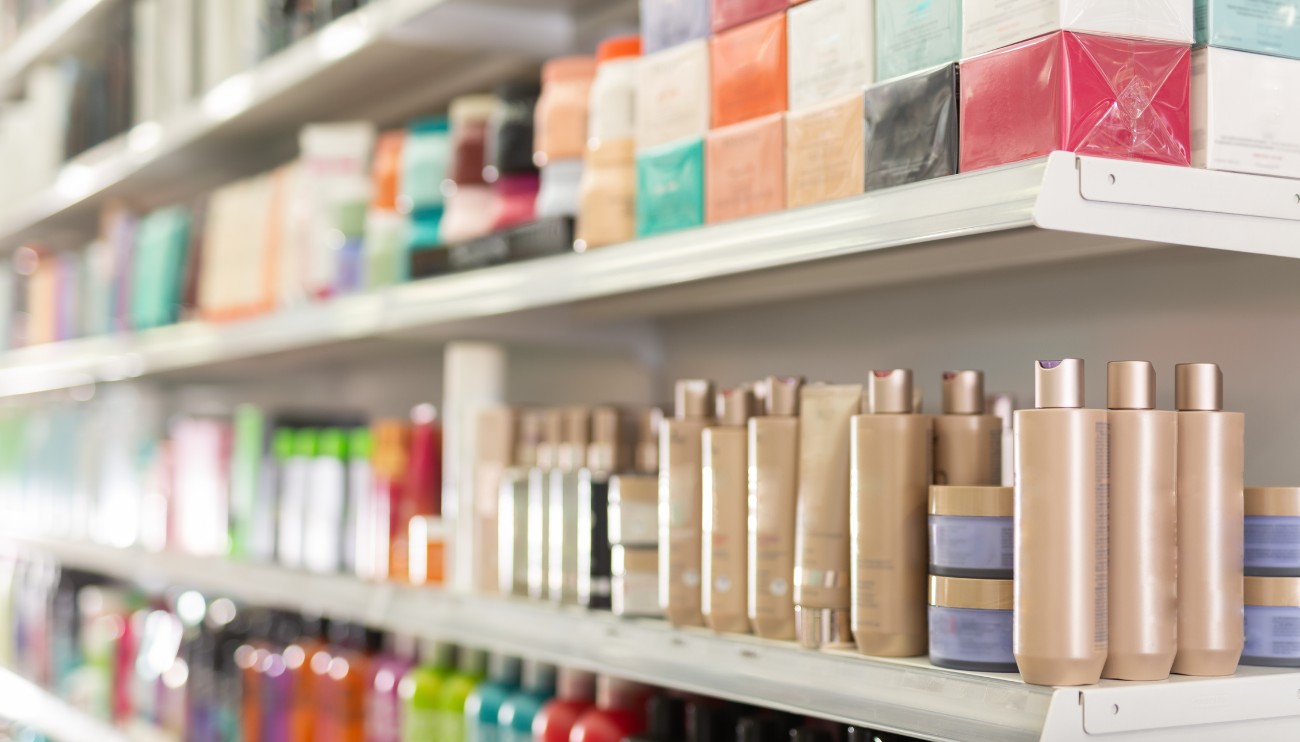Beware of hormonally active ingredients

They are found in shampoos, creams and sunscreens and are used as preservatives or UV filters: substances with hormone-like effects, also known as endocrine disruptors (EDCs). These include certain parabens and benzophenones, for example. Although the ingredients in cosmetics are usually regulated, their hormonal effectiveness was not taken into account until recently. In addition, substances are usually assessed individually, whereby the so-called cocktail effect, i.e. their interaction, is often not taken into account.
Endogenous hormones such as adrenaline, oestrogen and testosterone are vital messenger substances that transmit information between organs and tissues in our body. As our hormone balance is very sensitive, even the smallest amounts of endocrine disruptors (EDCs) can disrupt the balance in the body. It is now known that hormonally active ingredients accumulate in the body, influence each other and potentiate their effects. As a result, they can cause long-term damage to health. They therefore pose a serious threat to humans and the environment.
![[final] Endokrine Disruptoren Illu 2](https://www.codecheck.info/news/bilder/final-Endokrine-Disruptoren-Illu-2-650x371-1-488304.jpeg)
Hormonally active substances are omnipresent
Substances with hormone-like effects are contained in various products such as packaging, pesticides, cosmetics, detergents and cleaning agents. You ingest these substances every day through your skin, by inhalation or through food. Well-known examples are bisphenol A (BPA), phthalates and parabens. These substances are used in cosmetics as UV filters, preservatives or solvents, for example. Ingredients with endocrine-disrupting activity are a significant cause of consumer exposure to cosmetics. Their effects increase the risk of negative health consequences such as reproductive disorders, cognitive deficits, obesity and cancer. Sensitive groups such as children, pregnant women and adolescents are particularly at risk, the latter due to the onset of premature puberty, for example. Nevertheless, EDCs have been used in products for decades without further regulation.
Dose and combination make the poison
Studies show that even small amounts of endocrine disruptors can increase the risk of hormone-dependent diseases such as breast and prostate cancer. In addition, the daily use of different products can increase the effect without a single substance exceeding the legal limits.
Dr Ruta Almedom, biochemist and scientific director of CodeCheck, warns:
‘There is no safe dose, because even minimal concentrations can have problematic effects in interaction with each other and with our body's own hormones, especially in sensitive phases of life such as puberty, during pregnancy or while breastfeeding.’
Not only the dose, but also the cocktail effect, i.e. the combination effect, must be taken into account as a matter of urgency:
‘Endocrine disruptors are found in cosmetics, food and the environment. We are rarely exposed to just one chemical, but many at the same time. These mixtures can react with each other and intensify their effects.’
![[final] Endokrine Disruptoren Illu 3](https://www.codecheck.info/news/bilder/final-Endokrine-Disruptoren-Illu-3-650x371-1-488305.jpeg)
New EU legislative proposal expected in 2026
In 2019, the European Commission drew up a prioritised list of 28 substances used in cosmetics with potential endocrine disrupting properties. The testing of these substances is still ongoing in some cases and very time-consuming.
To date, risk assessments of cosmetic ingredients in the EU have been carried out by the Scientific Committee on Consumer Safety (SCCS) on the basis of individual substances. This does not take into account the interaction of several hormonally active substances and mixing effects with other substances. However, this cocktail effect is already being discussed in European chemicals legislation, the REACH Regulation. The EU Commission wants to introduce a mixture assessment factor (MAF) in order to take possible combination effects of chemicals into account across the board.
CodeCheck calls for precautionary consumer protection
In our opinion, these measures alone are not sufficient to fully guarantee consumer safety. Instead of relying on complicated individual tests, a clearer definition would be useful to ensure that endocrine disruptors do not enter the environment or the human body in the first place. This could be achieved by strictly limiting their use to closed systems that do not reach our bodies or the environment. This hazard-based approach could make a decisive contribution to better protecting consumers.
Dr Almedom comments:
‘The precautionary principle should help to minimise risks, even if scientific evidence is not complete. Nevertheless, the current complicated identification of these substances often means that hazardous chemicals remain authorised and we come into contact with them every day.’
How you can avoid endocrine disruptors in cosmetics
As long as the legal regulations on the authorisation of cosmetic ingredients do not take the cocktail effect into account, we strongly recommend reducing contact with hormonally active substances as much as possible or, ideally, avoiding it altogether.
![[final] Endokrine Disruptoren Illu 1](https://www.codecheck.info/news/bilder/final-Endokrine-Disruptoren-Illu-1-650x371-1-488303.jpeg)
Our tips for everyday life
- Pay attention to the ingredients and avoid products with hormonally active ingredients such as ethylhexyl methoxycinnamate (OMC), benzophenones or propylparaben.
- Opt for certified natural or organic cosmetics, which generally do not contain hormonally active substances.
- Less is more. Reduce the amount of cosmetics used, especially in sensitive areas around mucous membranes or on children.
- Sun protection, anti-ageing and skincare all in one? Be critical of combination products. The more functions a product fulfils, the higher the risk of harmful ingredients.
- Documents such as Chemsec's SIN List (see sources) indicate which substances are considered to be of particular concern and should be replaced as soon as possible.
- The CodeCheck app also helps you to recognise products that are suitable for you. In the profile settings, you can choose to have products with hormonally active ingredients always displayed as unsuitable.
(Translated with DeepL.com)
Sources
- Chemsec SIN List: Endocrine-disrupting chemicals
- BfR – Bundesinstitut für Risikobewertung: Fragen und Antworten zu endokrinen Disruptoren
- KFT – The Chemical Compliance Company: Revision der Kosmetik-Verordnung: Was die EU-Kommission jetzt plant
- Europäische Kommission: Kosmetik-Verordnung – Bewertung
- National Library of Medicine: Endocrine-disrupting chemicals (EDCs) and cancer – new perspectives on an old relationship
- National Library of Medicine: Environmental causes of cancer – endocrine disruptors as carcinogens
- European Food Safety Auhority (EFSA): Wenn chemische Stoffe sich mischen – Bewertung der Risiken für Mensch, Tier und Umwelt
- EDC-MixRisk: Policy Brief



